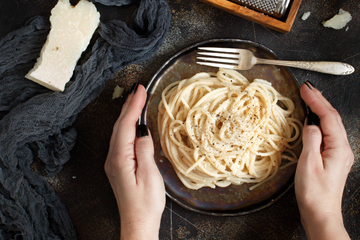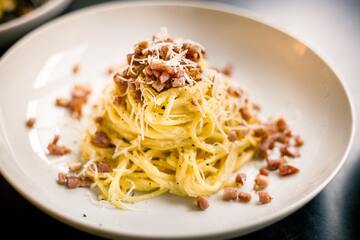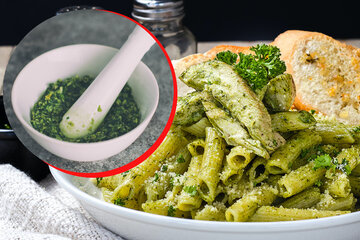Pasta puttanesca: How to make the best recipe and its surprising origins
There are few dishes more homely, comforting, and tasty than a bowl of saucy, salty puttanesca. It has a sordid and fascinating history, and is an easy and quick recipe. Here's how to make pasta puttanesca!
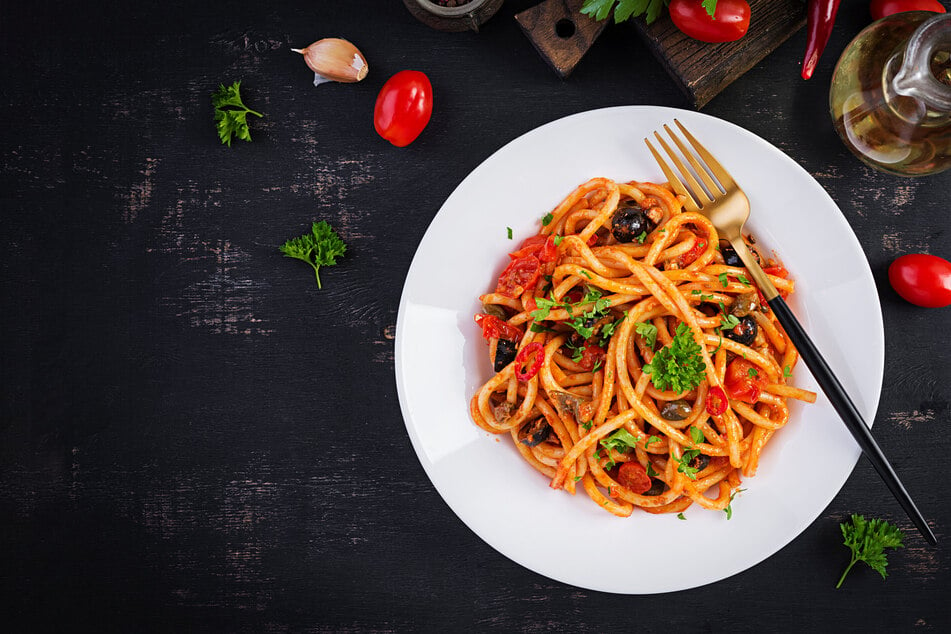
Puttanesca is one of the most underrated pasta dishes in the entire world.
This salty, flavorful sauce is remarkably packed full of cheap and easy-to-find ingredients, but will never let you down.
When people think of pasta, there are many dishes they consider before puttanesca, and that is truly a shame.
If you're a food fan, then this pasta puttanesca recipe will bring something new to your culinary menu. TAG24 is here to show you how to make an authentic puttanesca, and let you in on the meaning behind the name.
What is puttanesca?
Puttanesca is a beautiful tomato-based pasta dish that originates from Naples in the central south-western state of Italy, Campania. Commonly featuring olive oil, olives, anchovies and capers, along with a deep and rich tomato sauce, it is generally served with vermicelli, spaghetti, or penne.
While many recipes that hint at similar recipes to puttanesca actually appeared as early as the mid-19th century, it did not become commonly known until the 1960s. As a result, the humble puttanesca is a relatively new dish to Italian cuisine, though it clearly takes inspiration from commonly known traditional dishes like spaghetti alla siciliana or spaghetti alla partenopea.
With a fascinating history and etymology, pasta puttanesca is a dish that differs greatly between regions in Italy. Each version is just as "traditional", but features different ingredients. The Neapolitan version, for example, is made without anchovies. Other regions don't include the spice!
We, however, are including all of the above.
What does puttanesca mean?
The name "puttanesca" is derived from the Italian word "puttana" which roughly translates to a ruder word for "prostitute," in English. Some theories suggest that the dish was invented in the slums of Naples, potentially as a quick meal that sex workers could consume between clients. It's made up of a variety of incredibly cheap ingredients, leading cadence to this theory.
Another theory suggests that the name still comes from the word "puttana" but for a different reason. In Italian, this word is used as the kind of expletive uttered upon the stubbing of one's toe. In the same way that we would use one particular word (one that starts with an "S") in English, it could be possible that the term developed because people would simply throw in all the "stuff" that remains in their pantry.
How to make authentic and easy puttanesca: Recipe
We go into what makes a puttanesca "authentic" in a following section, but let's be real: Part of that authenticity is that it is kept simple, easy, and tomato-based. Indeed, there is very little that you're going to need when making pasta puttanesca, as it's an incredibly fast and easy dish.
So, what equipment do you need to make a delicious, easy puttanesca?
- A deep pot for boiling your choice of pasta
- Either a wide and relatively deep sauce pan / frying pan, or a medium pot
- A sharp knife
- A colander for your pasta water as well as for your tin / jar juices
- Chopping board
- Big wooden spoons
- Ladel
If you're feeling cheesy: Feel free to grab yourself some parmesan or grana padano cheese, and grate it out on top of your pasta. Of course, if you do this and buy a block of the proper stuff (which is always recommended), you're going to need a grater.

Puttanesca recipe | Ingredients
Pasta puttanesca is incredibly easy and quick, only taking about half an hour to put together from start to stop. None of these proportions need to be precise, so just grab whatever you've got in the cupboard (as long as it generally fits the vibe and taste profile) and chuck it in there.
Here are the ingredients you need to make pasta puttanesca:
- Pasta (of your choice), 1 pound
- 5 whole tomatoes (large, or a couple punnets of cherry tomatoes)
- Passata or canned tomatoes, 15-20 oz
- A healthy portion of large black kalamata olives (or an Italian alternative)
- A healthy portion of anchovies (or sardines, if unavailable)
- As many capers as you want, salted
- 1 chili
- 4 cloves of garlic
- 1 large onion
- Handful of fresh parsley
- A couple of basil leaves
- Extra virgin olive oil
- Cracked black pepper
- Salt
Cooking is about passion, love, and fun. That goes even more so for Italian food, so don't worry about making this all super precise and, instead, focus on cooking with feeling.
Puttanesca recipe | Instructions
The process of making puttanesca is one of the simplest in Italian cooking. You are more-or-less throwing everything in a pot and cooking it, boiling some pasta, and combining the two. As with all cooking, though, there is an ideal way to do it. So let's take a look at how you should do this.
Here's how to make pasta puttanesca
Step 1: This might seem obvious, but the first thing you should do is peel everything and chop it all up. Dice the tomatoes and onions, crush the garlic, wash your olives and capers, so on and so forth.
Step 2: As always, start with your onions. In your medium-sized pot heat up a large quantity of olive oil (enough that it coats the bottom). Bring it to a medium heat and add your onions. Sizzle and sauté until it is lightly translucent, but not brown. About two minutes into this process add and stir in your ground garlic.
Step 3: Having sliced your chili (remember that if you want to reduce the heat, either remove the seeds or just simply use less), add it to your now translucent and fragrant onion-garlic-oil mixture.
Step 4: Now it's time for that beautiful tomato. Add it in, along with a pinch of salt, and turn up the heat. You want to burn off all of that moisture until it is a thick and caramelized sludge. Season with a bit of pepper to taste.
Step 5: Now it's time for your olives and capers. Add them to the mixture and turn down the heat, mix them thoroughly and feel free to include a bit of the jar water for that extra vinegary tang.
Step 6: Add your passata or tinned tomatoes, stir thoroughly until combined, and bring the whole thing up to a simmer.
Step 7: Now pop your anchovies into the mixture as well as about a cup of water, and season to taste with a little extra salt and pepper. Bring it to a slow simmer and start to reduce.
Step 8: Once simmering, add water to a large pot, seasoned with salt. Bring this water to a rolling boil and then add your pasta. Cook this pasta for about 2–3 minutes less than the package instructions, for a perfect al dente.
Step 9: Add your pasta to the sauce and mix thoroughly, until the pasta is totally covered. If you want it to be a little bit more creamy, add a ladle of pasta water as you are mixing in the pasta.
Step 10: Roughly chop up your parsley and mix it in, so that it gets nice and warm and a little wilted from the steam, but not cooked.
Step 11: Serve elegantly in a bowl, garnishing with the basil leaves and a little crack of pepper. If you decided to add a bit of cheese, do so now.
As you can see, this is an unbelievably straight forward and easy recipe. It's also incredibly cheap, and you can add whatever floats your boat. Some great additions include a little canned tuna, some bell peppers, or some additional chili flakes.
What makes a puttanesca recipe authentic?
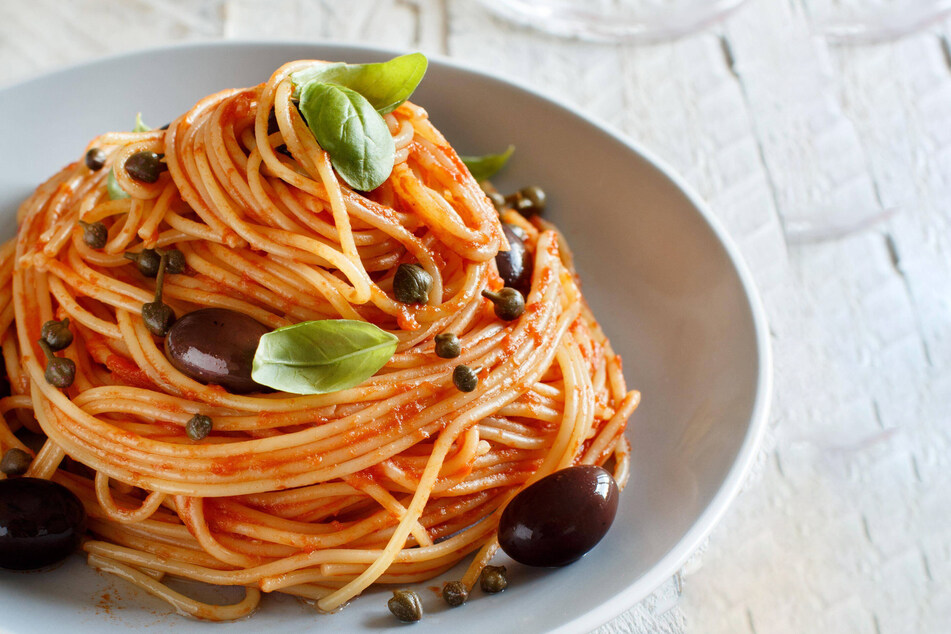
What do you want out of your puttanesca? Are you looking for that salty, tangy sting of the olives and the capers, or that fishiness from the anchovies?
What about the spice? Are you looking for something that's basically an arrabiata on steroids, or are you searching for something light and fragrant, with the fresh leafy taste of basil?
There is no true puttanesca, as it takes many different (yet similar) forms between different regions of Italy. If you are looking for more spiciness, head further south, if you are looking for salty sardines, go north. There are so many variations that nothing makes a puttanesca truly authentic.
Indeed, it's not even in the pasta itself. Of course, if you're looking for an al dente bite to it, you don't want to go with a flour-based or homemade pasta – you want dried semolina pasta so that it's relatively dense.
The shape doesn't matter either - spaghetti, penne, fusilli, tortellini, whatever you want is fine! Personally, we prefer it with penne or rigatoni, to fill with that scrumptious sauce.
But what makes a puttanesca, well, a puttanesca? A puttanesca is a tomato-based pasta dish that's filled with salty little delights, mainly from jarred or canned products. As we said, it is said that this dish comes from a habit of sex workers throwing together a bunch of ingredients on hand when quickly eating for dinner, before servicing a client. It's fast, it's tasty, it's cheap, and it's healthy.
There are lots of different kinds of pasta puttanesca
A puttanesca sauce is, more-or-less, a salty brine filled with flavorful ingredients including anchovies, olives, and capers. Feel free to throw it all together with some penne, some spaghetti (if you're feeling a little more traditional), or use it as a base sauce for a play on lasagna!
If you want more variation, try throwing in some peppers, an extra chili or two, or maybe some delicious guanciale.
There are so many possibilities out there, and puttanesca truly offers a fantastic opportunity for a bit of creativity. Pair it with some beautiful red wine (maybe something homemade?), and some beautiful cheese, for a dinner that will keep your stomach filled and happy!
Cover photo: 123RF / Timolina

